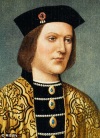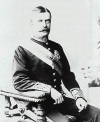Acknowledgement is made to Mr David Snoxell, a local historian, who kindly reviewed the details of this document.
The Manor of Wycombe was held by Robert D’Oyley, one of the followers of William the Conqueror. In 1170s, King Henry II took possession, and gave the manor to his son Geoffrey Archbishop of York
| 1203 | King John granted the Manor to Sir Alan Basset, one of the nine barons who were present at the sealing of the Magna Carta at Runnymeade. |  |
| 1281 | The Manor passed to the Despencers, and later reverted to the crown by attainder. | |
| 1332 | Granted by the King to William de Bohun, Earl of Northampton. |  |
| 1399 | The Manor passed into the ownership of the Crown, when Henry Duke of Lancaster became Henry IV. |  |
| 1411 | The estate had two fulling mills and a great Barn. Held records show that the Barn was repaired in 1411 with tiles from Penn at 3s-4d per thousand tiles. | |
| 1437 | The name “Bassetsbury” was first recorded. | |
| 1483 | King Edward IV granted the Manor to the Dean and Chapter of Windsor, who later leased it to Lord Windsor, then John Raunce, and finally became vested in the Dashwoods of West Wycombe. |  |
| 1503 – | 1531 Walter Jessop was bailiff of the manor, and the wealthiest man in Wycombe. | |
| Tudor | times A half timbered house stood on the site, and Queen Elizabeth I was entertained there for one night by John Raunce. Re-modelling took place during the reign of Charles II, but some of the Tudor woodwork remains to this day. |  |
| 1717 | The Dashwoods of West Wycombe acquired the lease of the Manor of Wycombe, comprising the Bassetsbury Manor house, the Mill and Barn and Holwell Mead (later joined to the Rye). |  |
| 1800s | From 1812 – 1828 the Royal Lancasterian School occupied the Manor house with 180 boys housed in two rooms. | |
| 1883 | The Dashwoods lease of the Manor from 1717 expired, and the Ecclesiastical Commissioners sold it to Lord Carrington. |  |
| 1920s | The buildings were derelict, and in considerable disrepair, with no internal sanitation, no water service or internal lighting. Sir Winston Churchill inspected the Manor with a view to purchase, but did not proceed. | |
| 1931 | Purchased by Fred Skull, the grandson of Walter Skull, renowned furniture manufacturers of High Wycombe. He significantly restored the Manor house through the 1930’s, to its authentic history as a small Charles II Manor house, with some of its Tudor core retained. The main doors to the Manor and several other fittings (including wood panelling) came from the original Quaker Meeting House in Crendon Street when it was demolished. The South end of the Manor house was extended significantly. With renovation completed, the Manor house was then exquisitely furnished with period antiques. | |
| 1934 | Queen Mary visited the Manor house to view the restored house and its collection of antiques. |  |
| 1952 | After Fred Skull’s death, the contents of the house were auctioned by Christies, and the estate was purchased by Wycombe District Council. Previously the National Trust had been offered the Manor house with contents as a gift, but finally declined the generous offer. |  |

Bassetsbury Manor was in use as a prestigious setting for commercial lettings, and from 1997 was a much sought after licensed venue for weddings. The premises have recently been sold by the Wycombe District Council to the Crown House School for development, opening in September 2014.
Bassetsbury corn mill and adjoining cottages have been developed as housing.The Tythe Barn was significantly renovated by Wycombe District Council in the late 1990’s, including a re-roofing and foundations, and subsequently auctioned for development as offices. The major part of the barn – “The Tythe Barn” and its outbuildings, were purchased in 2003, for use by the Christian Science church in High Wycombe, after over 70 years in other premises in the town. The outbuildings, which were the original cow sheds to the barn, were restored by the church, and are now used as car space.
Tythe Barn Restoration
[widgetkit id=”5″]
The rest of the barn – “Bassetsbury Barn” was previously occupied by an architects practice, but was recently purchased in 2009 by the church for its use, re-establishing the “Tythe Barn” as a single building.
The “Clark’s Barn” building was added in 2008, as an architect’s practice.